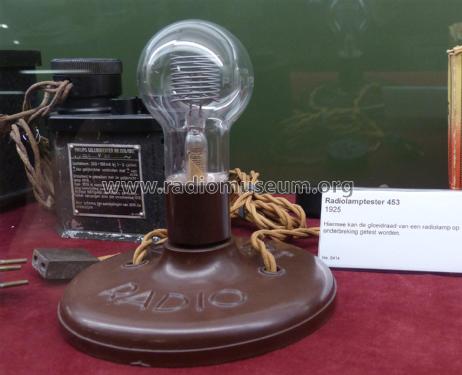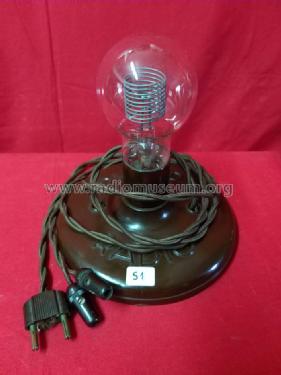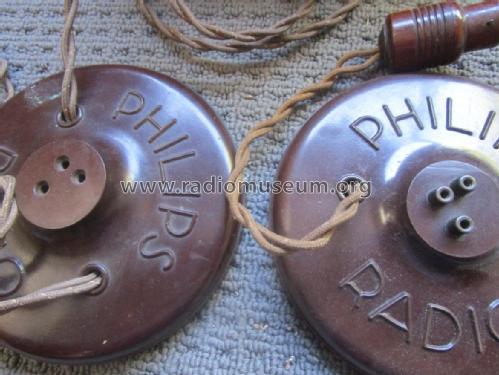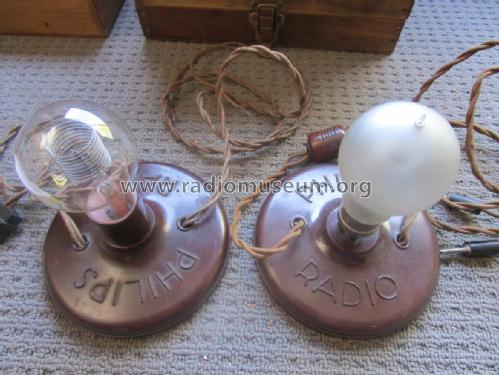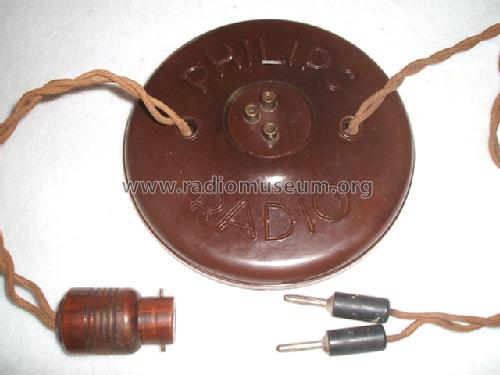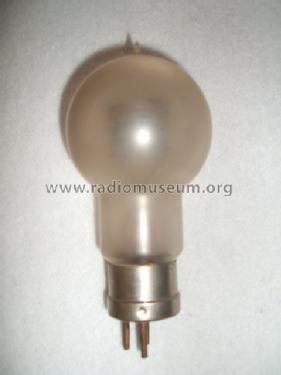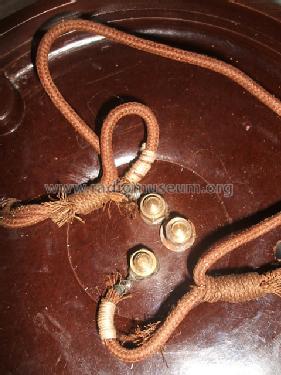Tube filament tester 453
Philips; Eindhoven (tubes international!); Miniwatt
- Pays
- Pays-Bas
- Fabricant / Marque
- Philips; Eindhoven (tubes international!); Miniwatt
- Année
- 1923–1925
- Catégorie
- Appareils de mesure et de dépannage (matériel de labo)
- Radiomuseum.org ID
- 214003
- No. de tubes
- 1
- Lampes / Tubes
- 454_Philips
- Gammes d'ondes
- - sans
- Tension / type courant
- Appareil tous courants (CA / CC) / 110/220 Volt
- Haut-parleur
- - - Pas de sortie basse fréquence
- Matière
- Boitier en bakélite, lampes visibles
- De Radiomuseum.org
- Modèle: Tube filament tester 453 - Philips; Eindhoven tubes
- Dimensions (LHP)
- 150 x 150 x 0 mm / 5.9 x 5.9 x 0 inch
- Remarques
- To check filament continuity of early E3 and E4 base tubes. The 453 is a Miniwatt tester and the first Philips Miniwatt’s were the B2 and D6 tubes in 1923. There are tipped ones and tipless ones. They were also the first tubes with getter and you can not see the filament. That will be the reason for making the 453. In 1925, the tube filament tester 453 was already obsolete because it can not test the emission of a tube and the anode current became much bigger. The neon indicator bulb with spiral anode was made first with a metal base and tip and later with a moulded base, clear and tipless.
Heizfaden-Durchgangsprüfer für Röhren mit E3 und E4 Sockel.
- Poids net
- 0.340 kg / 0 lb 12 oz (0.749 lb)
- Auteur
- Modèle crée par Fin Stewart. Voir les propositions de modification pour les contributeurs supplémentaires.
- D'autres Modèles
-
Vous pourrez trouver sous ce lien 5280 modèles d'appareils, 4428 avec des images et 3461 avec des schémas.
Tous les appareils de Philips; Eindhoven (tubes international!); Miniwatt
Collections
Le modèle Tube filament tester fait partie des collections des membres suivants.
Musées
Le modèle Tube filament tester peut être vu dans les musées suivants.
